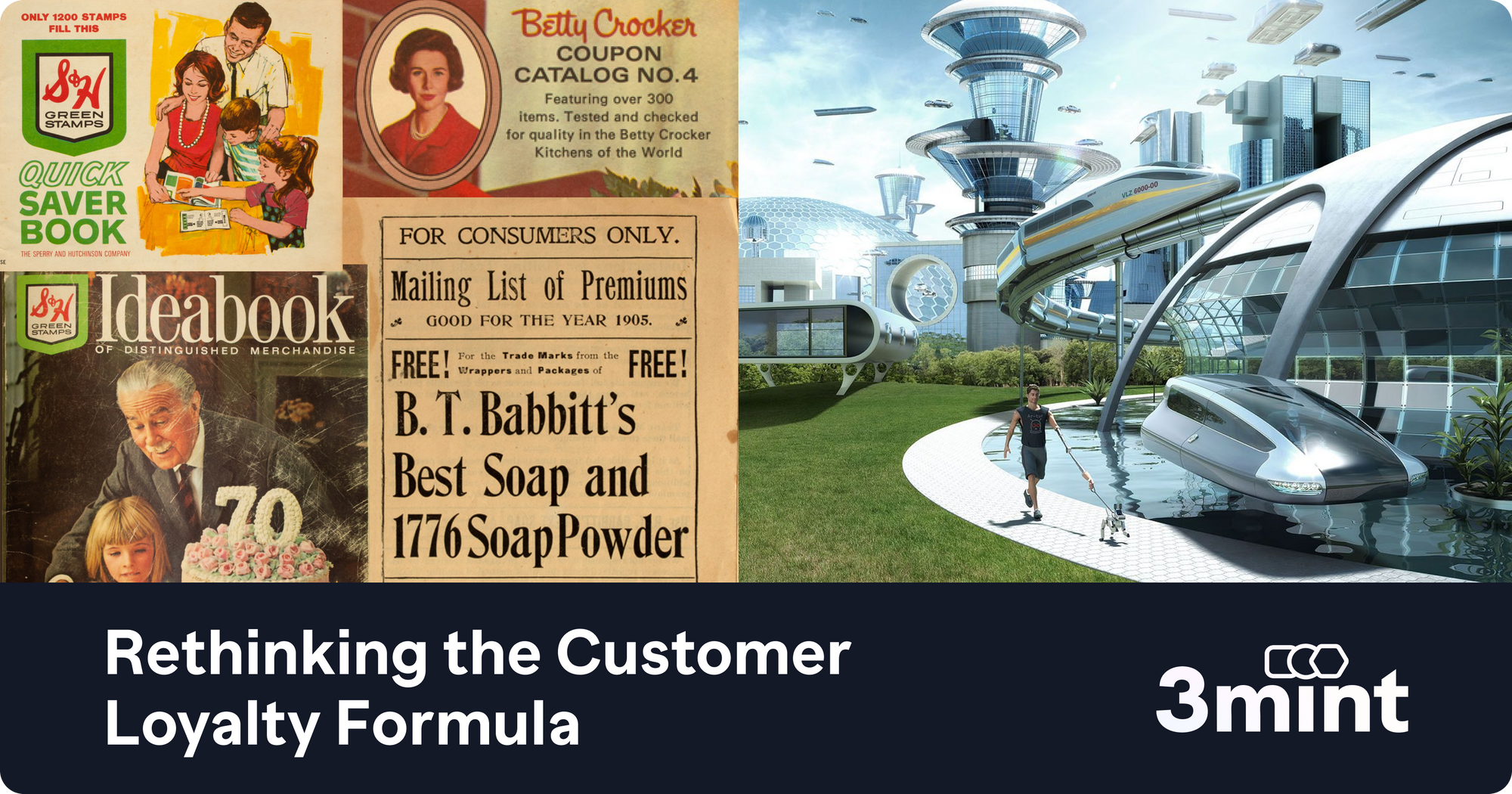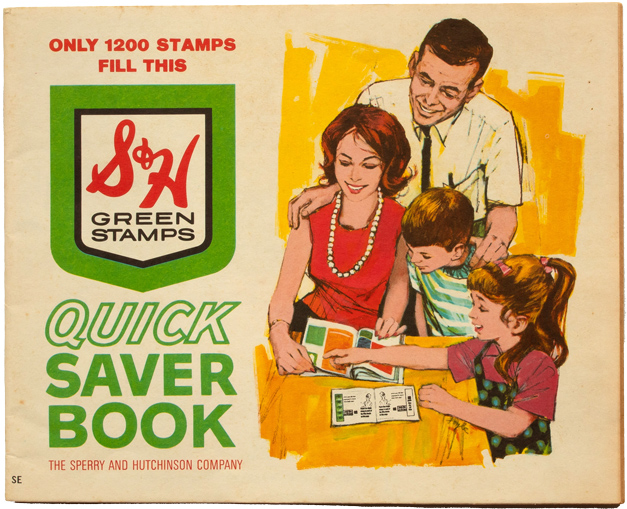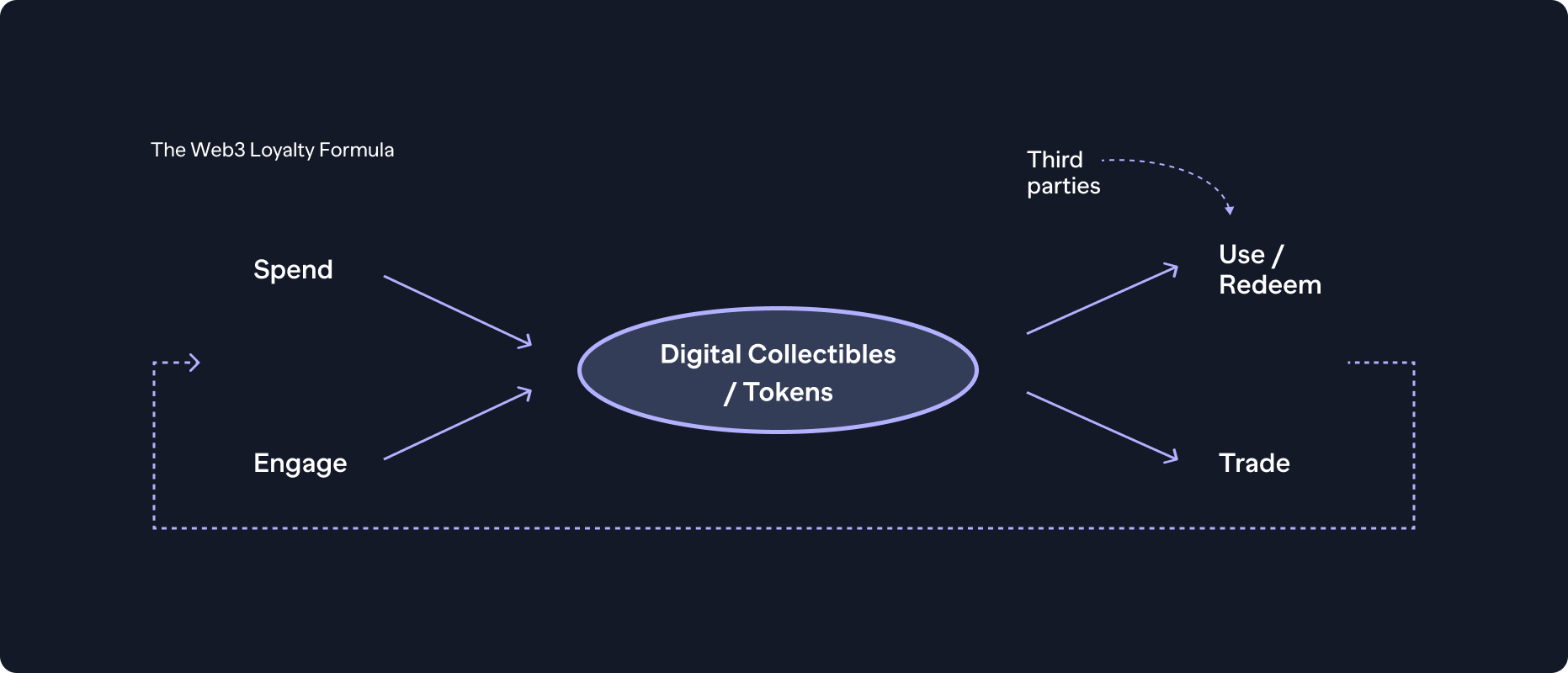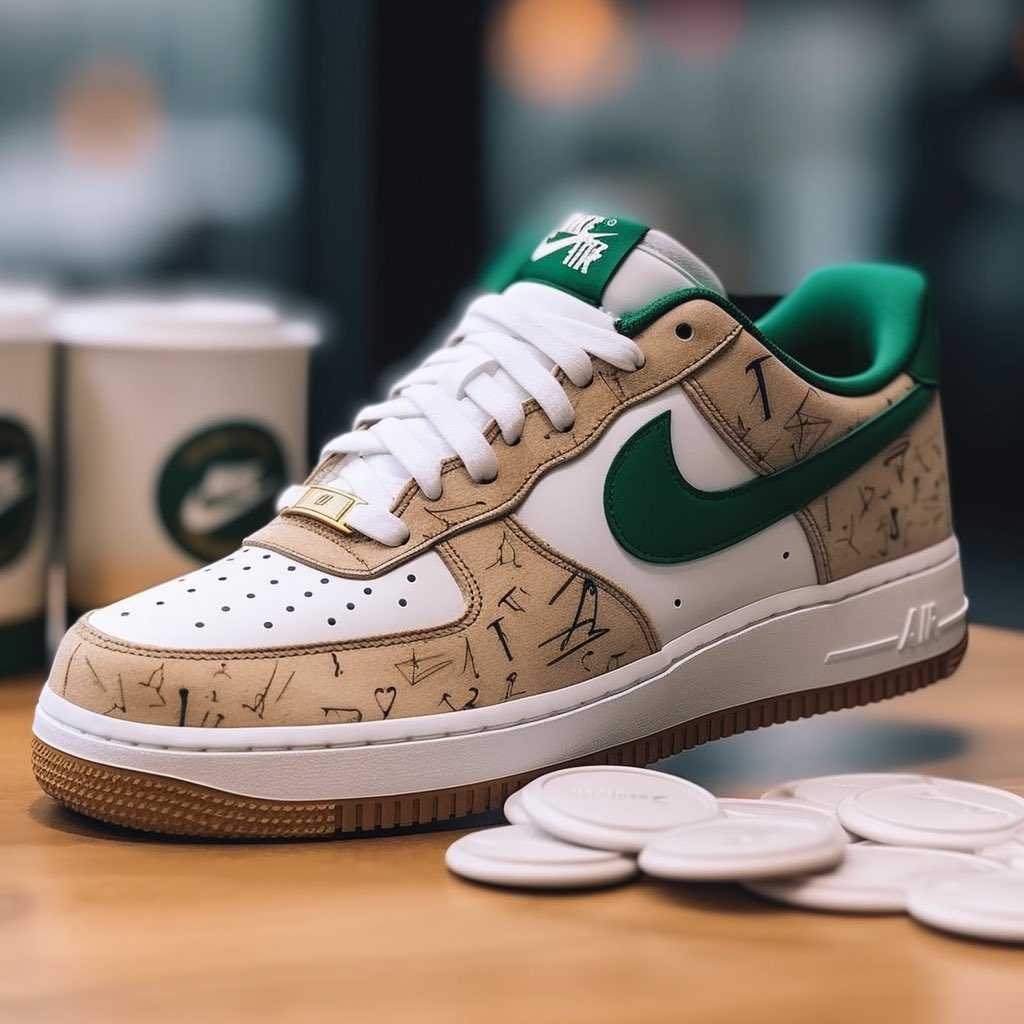Rethinking the Customer Loyalty Formula

What does it mean to build a Web3 loyalty program?
From a technology standpoint, yes, you might be using digital collectibles and tokens; you may also be collecting on-chain purchase and affiliation data; and yes, underneath it all you’re leveraging a blockchain like Ethereum or Polygon. But, more importantly, you’re using a new formula to build loyalty with your customers, leading to higher engagement rates and LTV.
In this post, we’ll explore what this new formula is and its implications on consumer businesses.
How Loyalty Programs Work Today
Loyalty today is boring. Most programs follow a very static and similar formula: earn and burn. You’ve very likely taken part in this scheme if you’ve ever collected stamps on a punch card at your local coffee shop, or if you collect points or cash back on your credit card purchases.

It’s a system as old as some of the very first loyalty programs in existence. Some point to the famous Betty Crocker coupons, where customers would cut these out, collect them, and then later redeem them for rewards; or similarly, the S&H company’s Green Stamps. But the invention goes back even further, at least to the copper coins of the late 1700s, where these coins could be collected by visiting local shops and redeemed for future purchases.

It’s a basic system that has worked in the past, but it’s not very exciting: spend, earn points, redeem points for freebies or discounts.The expectation is one of passive interaction, with often the same earning dynamics and the same short list of rewards to redeem. Can we do better?
The New Loyalty Formula
With Web3 and digital collectibles, we have the opportunity to completely flip the loyalty formula on its head. That spells novelty across each of the three steps in the original formula (Spend → Earn → Redeem). We’ll break this apart into three new phases: Engagement, Digital Collectibles, and Redemptions.

Engagement
First, with Web3 and related technologies, we can introduce new ways of interacting with a brand to earn rewards. Of course, you can still get rewarded by purchasing products. But these days, it’s possible to create more gamified, participatory experiences that involve your most passionate customers on a deeper level—and it’s possible to reward these avid customers with more personalized, forms of recognition that your customers actually own.
What are some of these forms of engagement?
- Social media interactions: follow, like, comment, and share your experiences about the brand on social media platforms
- Real-world and digital scavenger hunts: visit a store, a pop-up, or an event
- Referrals: refer a friend to the brand or the loyalty program
- Polls and surveys: complete polls about the brand, the product, or even yourself
- Community participation: take part in community discussion and voice your opinions about the brand
Digital Collectibles
Second, while you can still earn run-of-the-mill points in a Web3 loyalty program, the big shift comes in the new forms of rewards you can get: digital collectibles. You’ve likely heard of digital collectibles—they are essentially unique digital assets that often come with some form of artwork or media; they can represent your affiliation to a brand or a community, or they can represent an action you’ve taken like purchasing a product. That’s not all, though—they also serve as a key, which can be used to unlock various things, both online and offline. We’ll get into that, but, in essence, a digital collectible is a digital receipt that says you, the customer, have done some action, and as a result have access to some thing.
How is this different from earning points? In simple terms, it comes down to ownership and interoperability. With digital collectibles, the customer or user can now prove their engagement history without the need for the brand to be part of that process (ie. that information does not live exclusively in the brand’s database); their collectibles and tokens are standalone proofs of what they have done and, as a result, what they are entitled to in terms of perks and benefits. They own their data, and hence they own their benefits.
Moreover, as we’ve stated previously:
Collectibles can accrue emotional value (see how Reddit is using them), aesthetic value (perhaps you love the style of Azuki), and financial value (Starbucks’ stamps are selling at $2,000); but they can also have real utility tied to them that can be programmed over time and even enhanced by third parties, as they are fundamentally interoperable and composable.
Redemptions
Now that we’ve covered how to earn digital collectibles, and what exactly makes these collectibles special, we can get to the fun part: using them!
Whereas the traditional loyalty model would have you redeem your points or stamps (ie. “burn” them) for a reward, digital collectibles open up new avenues: not only can you trade them, but you can use them, like a key, to access and accumulate perks. While that sounds like a simple semantic difference, it’s a fundamental change from a static reward mechanism to a programmable, dynamic one.
Brands can assign perks like discounts, exclusives, and membership to the digital collectibles you own—as long as you keep them, you get access. Moreover, the collectibles you earn form a persistent digital trail of the interactions you’ve had with a brand. The more interactions you have—and the deeper they are—the more you can get rewarded by a brand over time.
We’re still only scratching the surface. Another very important dimension this uncovers is interoperability with third parties. Now that you, the customer, have ownership over your rewards, and these rewards live on a public ledger (hello Web3), other parties can read your digital activity trail and reward you as well.
For example, if you’re a super fan of Glossier (as measured by your digital collectibles), Sephora could make special offers available to you in store or online. If you’re a collector of Starbucks Odyssey Stamps, Nike might offer you a special chance to create your own Starbucks-inspired AF1.

For consumer brands, this makes partnering with complementary brands, retailers, and artists incredibly easy. You no longer have to integrate databases, decide what kind of customer information to share, and deal with accounting questions. You can instead focus on creating high quality, custom brand collaborations while dramatically cutting down on the time and cost of execution. This is a massive deal, as it turns loyalty from a siloed, static game to a multiplayer experience with embedded game design mechanics.
Some brands have taken a skeptical view of this shift, focusing on the perceived downside of having to compete with potential competitor brands for their customers. We think this is short sighted; what’s much more interesting is the vast expansion of your available target audience as a brand, and the shift to a truly gamified experience across brands and customers.
Today, loyalty might look like this: “I shop at Starbucks and earn points, which I then redeem for a coffee at Starbucks.” In this new loyalty model, the design space is far more interesting, and might take the following form: “All sorts of people, myself included, can earn Starbucks collectibles by completing all sorts of activities across different venues and trading between us; we can then earn perks at Starbucks as well as other brands.”
Conclusion
In a world of rapidly rising CACs and CPMs, customer loyalty is increasingly crucial for brands. At the same time, customers are demanding more than ever before, and it’s critical to embrace new formulas of engagement.
At 3mint, we make it easy to get started, and can work within your existing loyalty program or create one with you from scratch. If you’re interested to learn more, get in touch here.
About 3mint
3mint is the all-in-one Web3 customer loyalty platform for consumer brands, enabling you to leverage digital collectibles to capture more customer data, drive engagement, and build loyalty—without any of the hassle of dealing with Web3. Get in touch with us here.

